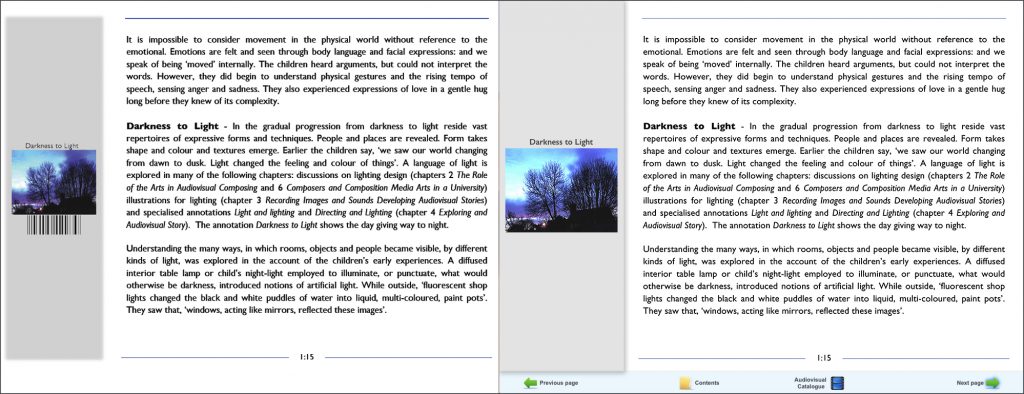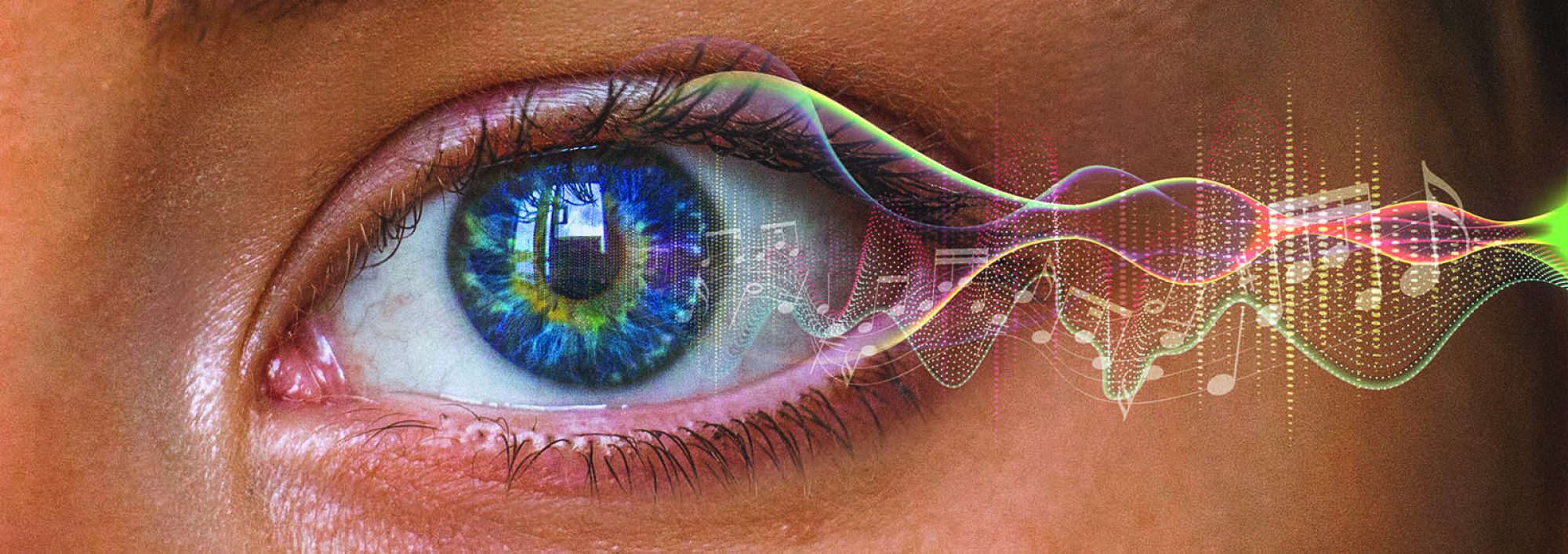A Papertronic eBook – Papertronic Images & Sounds is a revolution in Education and Publishing. It will transform Learning and the Future of the Book.
Why?
What is the significance of this Images & Sounds Audiovisual Language Papertronic and eBook?
The significance exists in the main proposition – that Audiovisual Composing joins Written Composing as two parallel and complementary languages. Audiovisual composing adds the languages of art, music, dance and the non-verbal aspects of dramatic performance such as lighting and mise-en-scène.
Images and Sounds is about how Audiovisual and Written composing parallel and complement each other. These composing processes use different symbol systems; but they can be compared. They both share similar Narrative Structures and Strategies.
Audiovisual Composing | Written Composing |
Images and Sounds | Alphabets and Words |
Repertoires of Expressive Forms and Techniques | Vocabularies |
Visual Theme / Mise-en-scène (location, characters, actions) Means (resources) and Ways (processes) | Rules-based System Subject-Verb-Object |
Shot Order in Constructing Sequences | Word Order in Constructing Sentences |
How?
The ideas in Images & Sounds are uniquely revealed by linking the written word with over 140 video shorts. These are activated via pictures positioned in a side bar. The book is available in two formats with the same page design and operational system.
There is a printed Papertronic book that links to a Barcode Reader App on a phone, allowing the reader to view the videos AND a fully integrated eBook App. The eBook App. and Barcode Reader App. are available for all electronic devices (on macOS, iOS, Windows and Android platforms).

Papertronic® printed book and eBook pages compared
The Papertronic and eBook – Images and Sounds Audiovisual Language – explores audiovisual composing, its applications and outputs.
The first four chapters: consider the different symbol systems used by audiovisual and written composing, explore the history of audiovisual composing, and provide a practical three layered framework for using audiovisual composing. The next four chapters explore how audiovisual composing has been used by various people, for a variety of purposes, in a range of diverse settings. The final chapter focuses on the pace and scale of audiovisual technology in a digital era and its impact on, and opportunities for, audiovisual composing. It also begins to explore multimedia composing, which uses words, images and sounds in a non-linear, interactive, collaboratively authored and networked compositional labyrinth.
